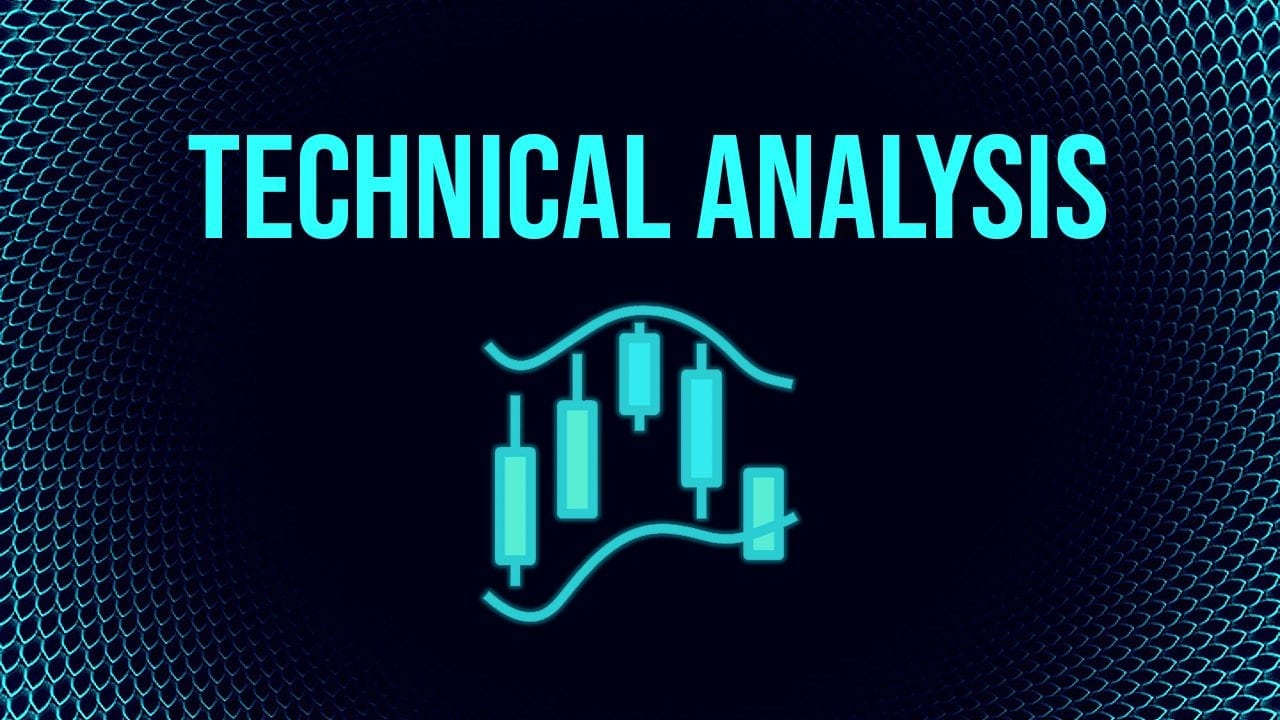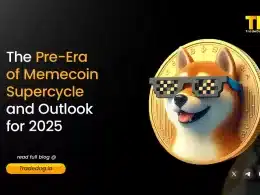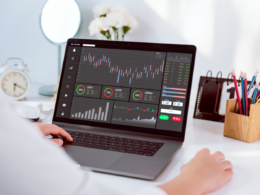Cryptocurrency and blockchain are mind-boggling for some. Yet people are interested in learning about them to gather fortunes by trading and investing. TradeDOG helps such people capitalize on the best opportunities through our simplified advice. Here we are with the crypto jargon that people need to learn about.
So you’re into crypto and find it too difficult to make sense of the technology; especially the jargon that makes you scratch your head. Don’t worry, You’re one among thousand others who are clueless to the numerous terms used in crypto. We are making it easier for you to comprehend the technology and the entire crypto lexicon. To make crypto accessible to everyone out there, TradeDOG will simplify the complications and make the concept easier for people to make it understandable, transparent and logical.
Let us delve into the terms and determine their meaning.
Trading related terms
Market Cap: The market cap is the entire worth of a cryptocurrency. It can be understood as the total value held in a specific digital currency. It is calculated by multiplying the total supply of coins by the current price of an individual asset. Coinmarketcap is a major repository of all the cryptocurrencies trading in the market.
Exchange: An Exchange is an online platform to buy and sell cryptocurrencies. One can also exchange cryptocurrencies for other digital currencies, trade pairs or exchange other digital assets for US dollars or Euro or their respective Fiat currencies of their country.
Fiat: Fiat is a government-issued currency such as the USD, GBP or EUR. It is the traditional currency circulating within a country used by its citizens.
Whale: A whale is a person or an entity that owns a huge amount of cryptocurrencies.
Limit Order: The limit is an order that is placed with a specific limit price on the order book on the exchange. The limit price is determined and set by the trader/investor and it will only be executed if the market price of the desired asset reaches the limit price. This helps traders avoid losses in uncertain markets as your trade is automatically executed before sudden price changes affect profitability.
Stop Order: A stop order or stop-loss is when the trader chooses a higher price for selling, and lower for buying. This helps mitigate risks and losses and ensure traders get ‘buy-in’ and take advantage of a ‘run-up’.
Market Order: Market orders are used by traders in a rush. It is basically an order to quickly buy or sell an asset at the best available current price. You shouldn’t be opting for market orders if you’re new to cryptocurrency or you will end up paying more than what’s necessary. Stick to limit orders instead.
Bull wall: Buy wall is on the ask side of the order book at a particular price where there will be more volume available. It is a huge order usually placed by whales to pump a market price and create FOMO. Buy or sell walls usually occur when whales holding any cryptocurrency want to control the prices to meet their interest.
Sell Wall: Whales engage in creating sell walls similar to the buy walls to manipulate the price of a cryptocurrency for personal gains. Entire market can crash following a huge sell order as it creates panic among other hodlers and makes everyone sell their assets frantically.
ICO: ICO or ‘Initial Coin Offering’ is a method to raise funds in exchange for cryptocurrency tokens. Tokenized blockchain projects offer their customized crypto tokens in a public sale to raise funds for future development and provide returns on investments.
Altcoin: Another word for cryptocurrencies except for the Bitcoin. Every digital asset is referred to as altcoins in the cryptocurrency domain. There are currently more than 6000 altcoins in the crypto market since the inception of the Bitcoin. These are alternatives to the Bitcoin and were created after it marked its presence in the digital world.
Margin Trading: Margin trading is a method of trading assets using a third party’s fund. As opposed to regular trading accounts, margin accounts enable traders to access greater capital, allowing them to leverage their positions.
Pumping: The use of underhand tactics or engage in covert advertising for a cryptocurrency to create hype or FOMO in order to pump its price.
Stable Coin: Stable Coins are digital assets whose value is usually pegged to another cryptocurrency or fiat currency. Stable Coins are created to overcome the inherent volatility in cryptocurrencies and they are relatively safer and secure as they are collateralized against an equal counterpart in reserve as a backing.
Arbitrage: Arbitrage is taking advantage of the price difference of the same digital asset on two different exchanges. This imbalance in prices can help derive the best possible investment options on different exchanges and profit from the price difference.
FOMO: FOMO is the ‘Fear of Missing Out’ on profitable investment avenues and making significant gains just like others are making at the moment. It is often aroused on social media giving hype to a certain digital currency that ensues a buying frenzy amid investors and hodlers.
FUD: FUD is a wicked way to introduce panic among people with false facts and figures. It can cause the price of a cryptocurrency to tank based on bad news spread around on social media.
FUDster: A FUDster is someone who spread FUD with dishonest activities on social media. FUDsters are responsible for creating negative emotion among people which influence them to take bad decisions. Be wary of them!
Pump And Dump: Denoting the fraudulent practice of encouraging investors to buy shares in a company in order to inflate the price artificially, and then selling one’s own shares while the price is high. This is a cunning tactic to make profits from the Fear, uncertainty, and doubt among other investors.
Bagholder: A bag holder is an investor who holds a position in a security that decreases in value until it becomes worthless. This is a stubborn practice in which the investor retains his holdings for a long period of time which causes the investment value to drop to zero.
ROI: ROI is the return of investment on a certain investment. Return on investment is a ratio between net profit and the cost of investment. It is calculated on how the asset performed overtime and what return percentage is derived. In other words, ROI is used to evaluate the efficiency of an investment.
TA: Trend analysis or technical analysis is the method of reading charts to figure where the markets will be moving. Market movements are denoted on charts which make it easier to read them in order to conclude momentary movements and market depths.
Bollinger Bands: Bollinger Bands are statistical charts depicting the prices and volatility of a cryptocurrency over time. It is employed in digital currencies, financial instruments and commodities as well using a method proposed by John Bollinger in the 1980s.
Going Long: Going long refers to holding an asset for as long as possible. It is practised by traders who want to increase their ‘ROI’ or return on investment by holding it until its market sees a surge in its price.
Going Short: Going short is a way to make quick profits if the markets are stable. It is a form of a short trade in which assets are sold out and bought again at lower prices.
Bullish: Bullish means that the markets are on the rise and economically sound. The value of digital currencies is rising and going up denotes a bullish trend in the lingo of traders and investors. Most traders like to invest in assets at this point in time and sell before the markets turn bearish.
Bearish: The term denotes that the market is receding and the value of cryptocurrencies is declining and falling in prices. Investing or trading in these markets is very risky even for the season traders as opposed to bullish markets where the prices constantly go upwards. Traders usually prefer to sell their assets in bearish markets.
ATH: ‘All-Time High’ refers to the highest price that an asset has achieved on an exchange. It is the highest price that the asset has ever touched.
So these were the most common crypto words used in the cryptocurrency domain. In the next series of this article, we will talk about more complex and technology-specific terms that you should be aware of.
TradeDOG is sustaining investors and traders in both adverse and bullish market conditions, make sure you hop in the bandwagon to amplify your crypto trading capabilities. Keep following us for future advice and learn risk-mitigation strategies through the assistance of our professional traders backed by seasoned fund managers.
Follow our social updates here
Website Telegram Twitter Facebook Reddit Youtube Instagram Pinterest











Awesome write up.
This is really helpful. I will have this put on my wall.
May I suggest please
Thank you, please do tell us how can we improve and what can we include in our articles.